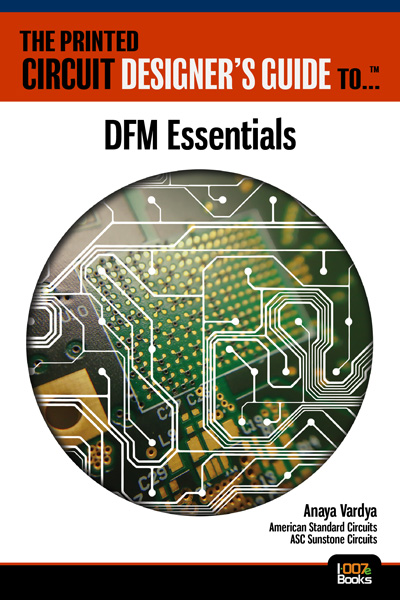Electroninks' MOD and iSAP Game Changers
March 25, 2025 | Marcy LaRont, PCB007 MagazineEstimated reading time: 1 minute
Electroninks, a prominent player in particle-free conductive inks, recently announced an exciting new range of metal-complex inks for ultra high density interconnect (UHDI) technology. At the SMTA UHDI Symposium in January, Mike Vinson, COO of Electroninks, gave a presentation on this line of MOD inks, which are versatile and suitable for a range of applications that require ultra-dense, miniaturized, and high-frequency technology. Mike says his technology is a game changer and will revolutionize UHDI circuit fabrication.
Marcy LaRont: Mike, would you give me a summary of your presentation at the SMTA UHDI symposium?
Mike Vinson: UHDI technology is crucial for developing smaller, more powerful electronic devices. However, its widespread adoption faces several challenges. Our line of products has been developed to address some of these key challenges. Our metal-complex inks simplify manufacturing while improving performance and reliability. We absolutely believe that these materials are poised to redefine how UHDI circuits are fabricated.
LaRont: Please explain what MOD stands for, how it works, and why this is a superior process.
Vinson: MOD is an acronym for metal-organic decomposition. MOD ink is particle-free, unlike the more standard nano-particle-based inks. Being particle-free gets you away from agglomeration, thus ensuring more uniform conductivity. From a processing standpoint, it is versatile for fabricators because multiple deposition methods can be used with it, including inkjet, screen printing, and spray coating. It has a very high peel strength and performs exceptionally well in extreme conditions and environments, and the process itself eliminates a lot of liquid waste. We call it eco-friendly manufacturing.
LaRont: Tell me about your proprietary iSAP process, another part of Electronink’s additive manufacturing solution.
Vinson: This ink-based semi-additive process (iSAP) is an innovative alternative to conventional subtractive etching and electroless plating. The main benefit of this process to fabricators is that, by leveraging MOD inks as a seed layer, iSAP offers a lower overall cost to manufacture. It eliminates process steps, while also significantly reducing waste and power usage compared to traditional etching. It also allows the fabricator to achieve those very fine lines and features required with UHDI, and improves signal integrity and RF performance in high frequency circuits. We believe that iSAP is a true game changer in the landscape of building UHDI circuits.
To read this entire conversation, which appeared in the March 2025 issue of PCB007 Magazine, click here.
Testimonial
"In a year when every marketing dollar mattered, I chose to keep I-Connect007 in our 2025 plan. Their commitment to high-quality, insightful content aligns with Koh Young’s values and helps readers navigate a changing industry. "
Brent Fischthal - Koh YoungSuggested Items
UHDI Fundamentals: UHDI Technology and Automated Inspection
11/03/2025 | Anaya Vardya, American Standard CircuitsFollowing up on the last article on integrating ultra high density interconnect (UHDI) PCB technologies and Quality 5.0, here we will do a deeper dive into the automated inspection component. UHDI applications demand extreme precision, with line/space dimensions below 25 µm and microvias below 30 µm. Automated inspection systems are essential to achieving the defect-free fabrication required at these scales, and legacy automated inspection systems are becoming obsolete and ineffective.
On the Line With… Ultra HDI Podcast—Episode 7: “Solder Mask: Beyond the Traces,” Now Available
10/31/2025 | I-Connect007I-Connect007 is excited to announce the release of the seventh episode of its 12-part podcast series, On the Line With… American Standard Circuits: Ultra HDI. In this episode, “Solder Mask: Beyond the Traces,” host Nolan Johnson sits down with John Johnson, Director of Quality and Advanced Technology at American Standard Circuits, to explore the essential role that solder mask plays in the Ultra HDI (UHDI) manufacturing process.
Connect the Dots: Designing for the Reality of UHDI PCBs—Drilling
11/04/2025 | Matt Stevenson -- Column: Connect the DotsUltra high density interconnect (UHDI) PCBs are changing the game in designing for the reality of manufacturing. With both consumer and industrial electronic devices becoming more advanced, the demand for UHDI PCBs will grow. That means we’re all likely to be designing more UHDI boards. UHDI advanced miniaturization technology challenges designers with regard to both board thickness and footprint. Designers will face more variables in every aspect of design creation. This is certainly the case with drilling.
Episode 6 of Ultra HDI Podcast Series Explores Copper-filled Microvias in Advanced PCB Design and Fabrication
10/15/2025 | I-Connect007I-Connect007 has released Episode 6 of its acclaimed On the Line with... American Standard Circuits: Ultra High Density Interconnect (UHDI) podcast series. In this episode, “Copper Filling of Vias,” host Nolan Johnson once again welcomes John Johnson, Director of Quality and Advanced Technology at American Standard Circuits, for a deep dive into the pros and cons of copper plating microvias—from both the fabricator’s and designer’s perspectives.
Interposers, Substrates, and Advanced Manufacturing
10/13/2025 | Marcy LaRont, I-Connect007I attend a lot of industry trade shows and conferences. Lately, during conversations with technologists, I’ve noticed that there is some confusion about what exactly constitutes an interposer. One question I hear every so often is, “Are all interposers substrates?” The short answer to that question is no. But some interposers are, in fact, full substrates.


